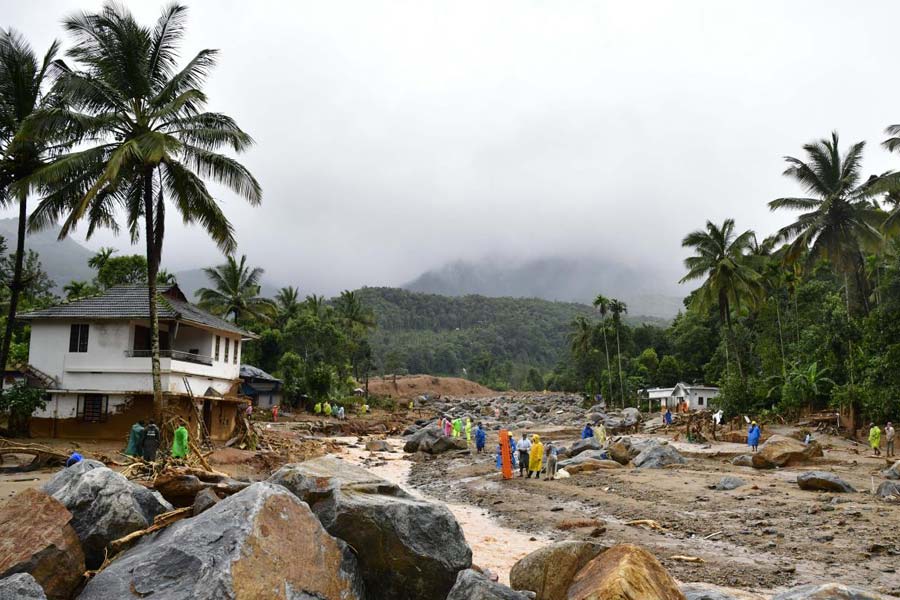A combination of factors — natural and man-made — has forced Kerala to confront its worst disaster after the floods of 2018. Over 150 people have lost their lives in deadly landslides in Kerala’s Wayanad district with the settlements of Mundakkai and Chooralmala being the worst affected. The death toll has been heavy because the landslides — they came in sharp bursts — struck in the wee hours. The number of casualties, despite the ongoing rescue operations, may rise further. Nearly all 14 of Kerala’s districts are vulnerable to landslides. But what exacerbated the scale of the disaster on this occasion was that the landslides coincided with heavy rainfall: Wayanad received over 140 mm of rain — around five times its usual volume — between the mornings of Monday and Tuesday. That climate change-induced precipitation can combine with other phenomena to enhance the lethality of natural disasters has been proved, once again.
But, as is often the case, the human hand in the tragedy must not go unnoticed. The Union home minister has alleged that the state government had been warned of an impending disaster in advance. The truth of the matter must be looked into. What remains undeniable though is that the authorities concerned, whether in the state or at the Centre, had turned a blind eye to the growing list of risks over the years. The Western Ghats Ecology Expert Panel had recommended way back in 2011 that 75% of the Western Ghats — they span across six states, including Kerala — be declared an environmentally sensitive zone. Nothing came of it. A report by Kerala's State Disaster Management Authority arguing in favour of relocating families from Wayanad’s vulnerable areas was not acted upon either. Instead, Wayanad witnessed unplanned development, the felling of forests, expanding agriculture and an explosion in unregulated tourism. What is of particular concern is that the hazardous event could not be prevented even with the existence of automated weather stations and a landslide and flood vulnerability map. This points to the distance that predictive technology has to traverse. Investments must be made at the earliest to put up localised early warning systems as well as maps capable of identifying the likely route of the flow of debris, both of which could have minimised the number of deaths. What must also be prevented is the politicisation of the tragedy. Preparations to avert such events in the future should be accorded greater priority than the settling of petty political scores.










